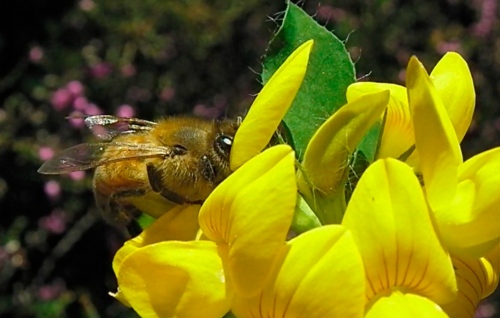
The new Echium Bee Bed is filling in well. From the colorful lobelia in front to the tallest Tower of Jewels echium plant, they all attract bees.

July 3…The Hugelkulture bed is looking so much better since we weeded, planted, and mulched with compost and wood chips.

July 3…The dwarf sunflowers are open and attracting bees already. It’s older siblings can only watch with envy.

This deer seems to be asking me the question…”What are you doing out here at this time in the evening, this is MY time?” In the video you’ll see why she looked up…she picked up the sound of the camera’s zoom lens. Their hearing is phenomenal, but luckily their eyesight isn’t that good. I’m standing in the sunlight just a short distance away, but she can’t see me very well.

I’m not sure if there’s any reason to net what’s left of these potatoes. They have been stripped of their leaves by the ‘cute’ deer. 😦

I mulched this corn in the morning…by the afternoon, the deer had already sampled it. A temporary fence is now in place to protect it…I hope it recovers.

This tomato’s only crime was to be planted at the end of the bed where the deer could reach it easily.




